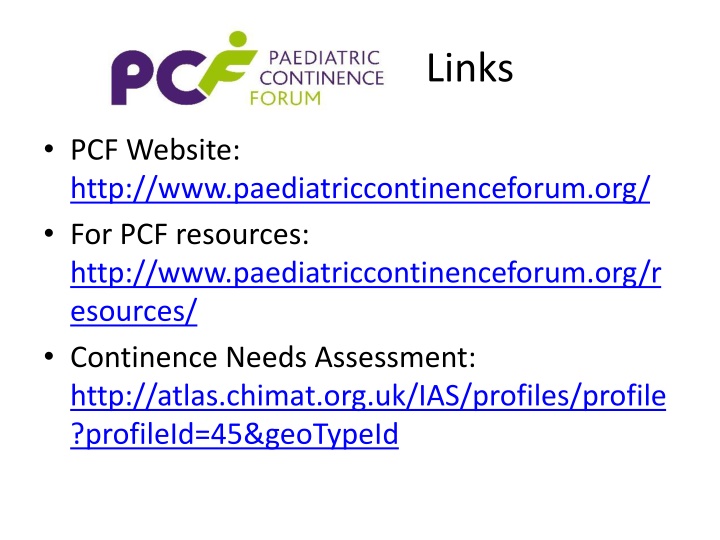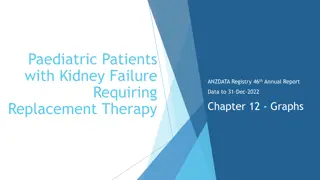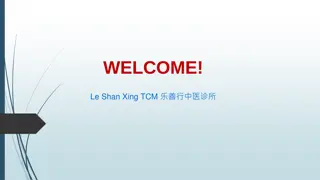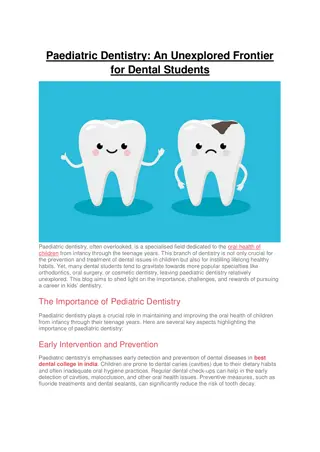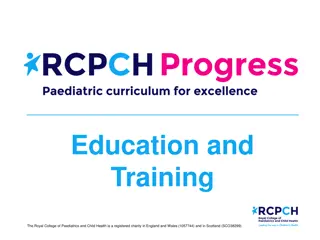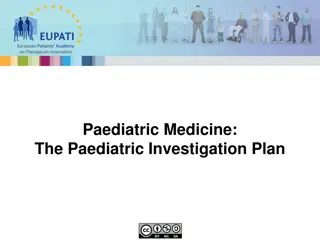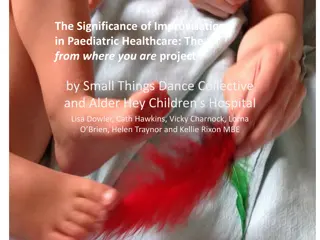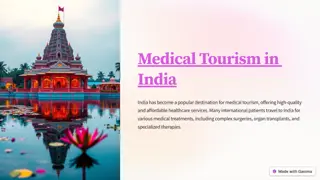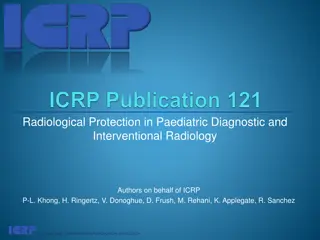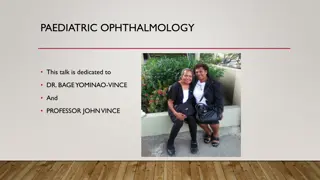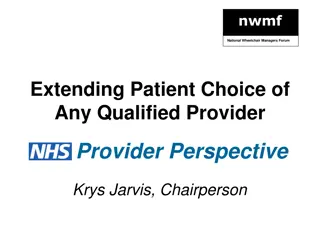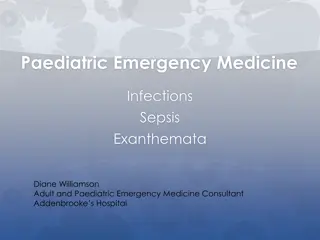Paediatric Continence Forum: Improving Children's Continence Care
Explore the initiatives of the Paediatric Continence Forum (PCF) aimed at enhancing continence care for children and young people. Learn about PCF's resources, origins, membership, lobbying methods, vision for excellence in care, and key publications including NICE-accredited guides. Join the movement towards better continence services for all children.
Download Presentation

Please find below an Image/Link to download the presentation.
The content on the website is provided AS IS for your information and personal use only. It may not be sold, licensed, or shared on other websites without obtaining consent from the author.If you encounter any issues during the download, it is possible that the publisher has removed the file from their server.
You are allowed to download the files provided on this website for personal or commercial use, subject to the condition that they are used lawfully. All files are the property of their respective owners.
The content on the website is provided AS IS for your information and personal use only. It may not be sold, licensed, or shared on other websites without obtaining consent from the author.
E N D
Presentation Transcript
Links PCF Website: http://www.paediatriccontinenceforum.org/ For PCF resources: http://www.paediatriccontinenceforum.org/r esources/ Continence Needs Assessment: http://atlas.chimat.org.uk/IAS/profiles/profile ?profileId=45&geoTypeId
Issues in Paediatric Continence Services Nicholas Madden Vice-Chair, Paediatric Continence Forum Consultant Paediatric Surgeon/Urologist (retired)
PCF Origins 2003 Founding director of ERIC: Dr Penny Dobson Increase political awareness of the needs of children and young people with continence problems Improve NHS services
The Paediatric Continence Forum PCF Membership includes: Specialist Nurses, Paediatricians And Representatives of: Royal College of Nursing Royal College of Paediatrics and Child Health Community Practitioners and Health visitors Association School and Public Health Nurses #association Commercial Members Secretariat: Whitehouse Consulting
Methods Lobbying MPs and Peers Parliamentary questions, drop-ins, APPG Responding to documents: NICE, CQC, government departments Engage with: Clinical and parental supporters ERIC, Bladder & Bowel UK etc Government departments etc You
VISION: Excellence in Continence Care One community- based service for children AND young people Toilet training, daytime wetting, bedwetting, constipation and soiling (products) Treatment for all children and young people from birth to 19 years old including those with learning difficulties and physical disabilities Leadership by a paediatric continence nurse specialist Input from a multi-disciplinary team Clear and effective referral and care pathways to: Secondary and tertiary care, Education, Child and Adolescent Mental Health Services (CAMHS) Social services
Publications Paediatric Continence Commissioning Guide NICE accredited ChiMat: Continence Needs Assessment National Child and Maternal Intelligence Network. PHE Excellence in Continence Care NHS England Minimum Standards in Continence Care UKCS/PCF Lobbying toolkit Freedom of information 2011, 2014, 2017
Current Issues School Nurses Poor community paediatric continence Services: F.o.I. Costly inappropriate referrals to 2ry/3ry care ChiMat: 2018/9 Daytime wetting guideline
School Nursing Public health responsibilities transferred to local authorities April 2015 School nurses, October 2015 Health visitors Continence is defined as a clinical rather than public health need Maximising the school nursing team contribution to the public health of school aged children (DH, PHE 2014) lists obesity reduction, pregnancy prevention, STIs, school absences etc. as priority for school nurses. Continence is not listed. Pressures on LA and PHE funding Resulting in Local authorities removing continence from the list of school nursing duties School nursing services integrated into a single 0-19 healthy child service A gap in continence services for children and young people
Freedom of Information 2017 98.3% Response 231 of 235: England -4, Scotland -1 Commission 5 paediatric continence services: Toilet training, enuresis, daytime wetting, constipation/soiling, products Integrated service Plans to commission new or review service Use of Paediatric Continence Commissioning Guide
Commission 4 services and products % 50 45 40 35 30 4 services 25 and Products 20 15 10 5 0 England Scotland Wales N Ireland UK Total
Commissioning integrated services 2014 2017 70% 60.00% 60% 50% 40.00% 40% 36.00% 31.55% 30.74% 30% 29.00% 27.00% 26.00% 23.08% 20% 10% 0.00% 0% England Scotland Wales N. Ireland UK average
Services led by a paediatric continence advisor 2014 2017 70% 60.00% 60% 50% 40.00% 40% 36.00% 30% 29.00% 23.30% 22.94% 21.10% 20.00% 20% 14.29% 10% 7.69% 0% England Scotland Wales N. Ireland UK average
Plans To Review services: 38.8% (43.5%) To Commission New Services: 10.8% (13.5%) Commission 5 services: 2014: 38% - 2017: 41% >20% Poor services and NO PLAN
Aware of and use the Paediatric Continence Commissioning Guide, 100.00% 100% 90% 80.00% 80% 71.43% 70% 64.07% 63.11% 61.54% 60% 50.49% 49.78% 50% 42.86% 40% 30.77% 30% 20% 10% 0% England Scotland Wales N. Ireland UK average 2017 - Aware of PCCG 2017 - Use PCCG
The epidemiology of general paediatric outpatients referrals: 1988 and 2006. Child: Care, Health & Development. 39(1):44-9 E. Thompson, C. Ni Bhrolchain, Wirral University Hospital 1988 Referral Rates per 1000 children per year (<15y) Most common reasons for referral % Heart murmur (13.8%) 2006 25.7 15.5 Asthma (15%) Constipation (10.5%) Enuresis (7%)
Inappropriate Referrals Scarlett et al, ICCS 2015 300 of 940 referrals were continence related 33% were considered to be inappropriate primary nocturnal enuresis, behavioural problems, concurrent bowel disease. Sutcliffe et al BAPS 2016 24.7% of clinic spaces were used for patients with chronic idiopathic constipation. 9.1% of clinic spaces used for medically managed patients
POTENTIAL COST SAVINGS Secondary and Tertiary OPD referrals 160 to 220 for first appointments 94 to 123 for follow-ups, new/follow-up ratios A&E attendances (average cost 108) Day case treatment (average cost 693). Specialist nurse in primary care average 17.66 an hour.
Society for Pediatric Urology, Miami 2014
